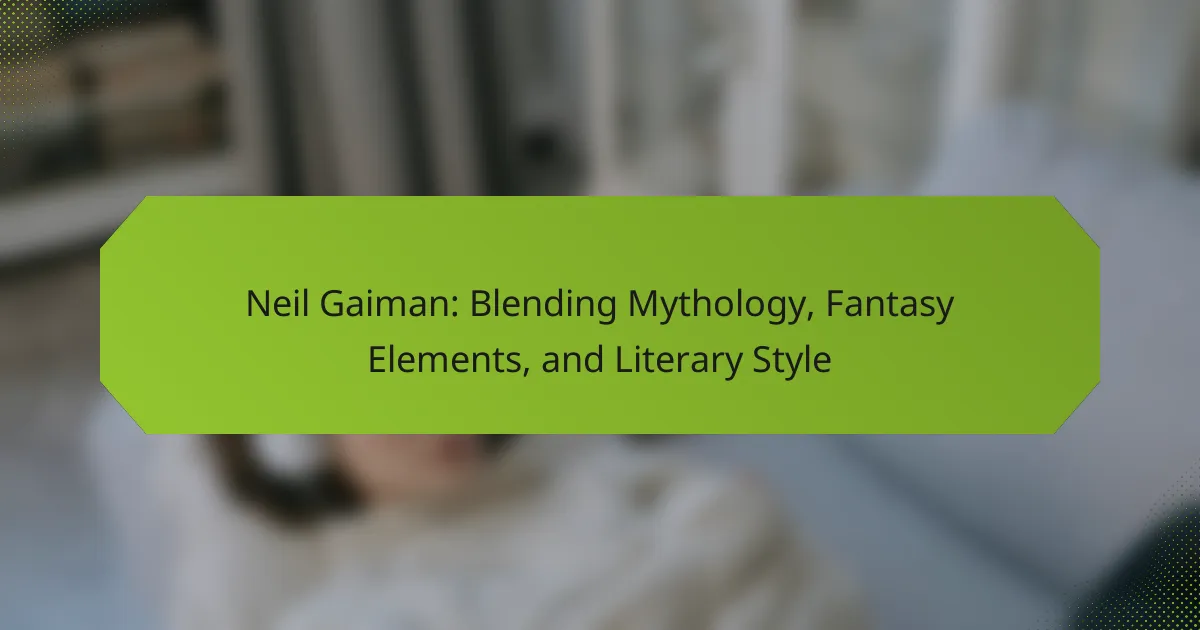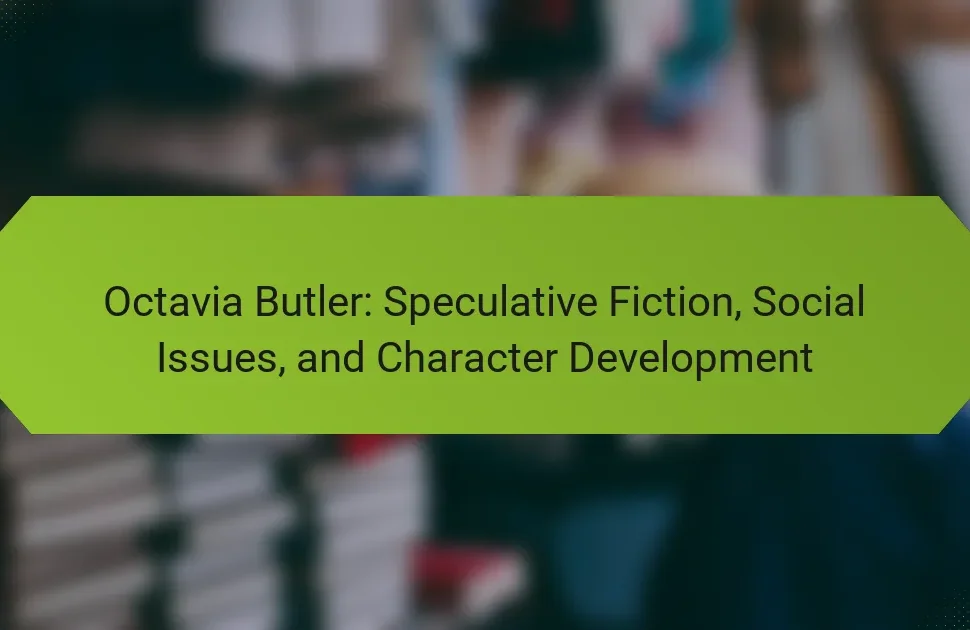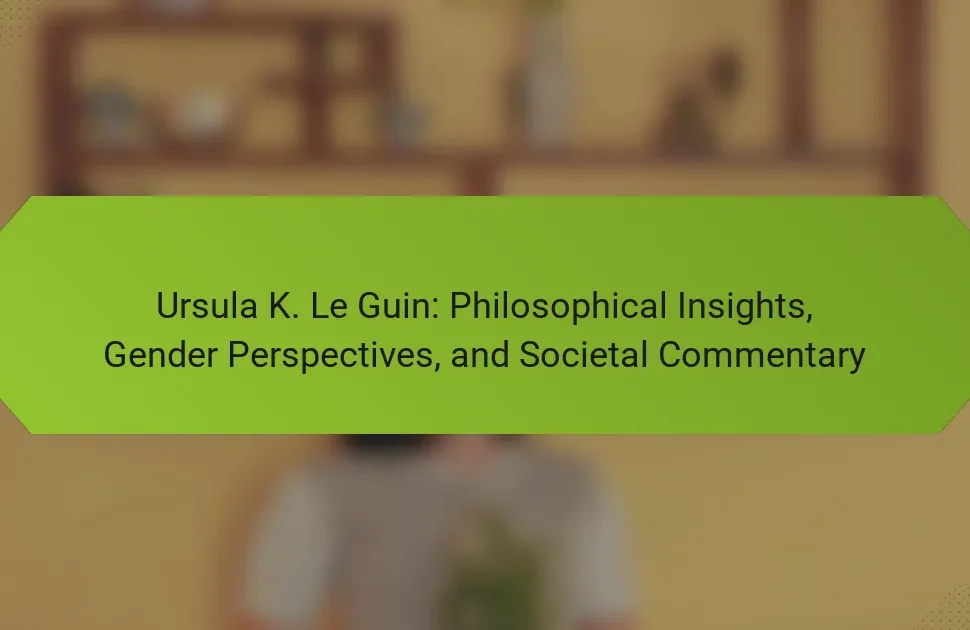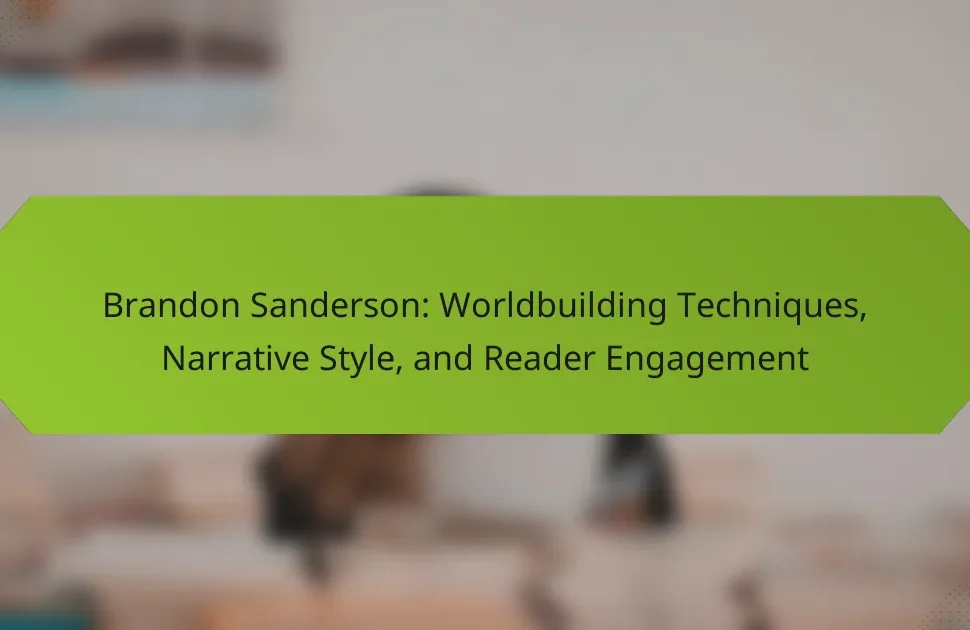Neil Gaiman captivates readers by blending mythology and fantasy elements in his narratives. He draws from diverse mythologies, creating interconnected stories that resonate with modern themes. Gaiman’s unique literary style combines poetic language and metafictional techniques, enhancing character depth and inviting readers to question reality. Cultural contexts shape the reception of his works, fostering diverse interpretations and connections with audiences worldwide.
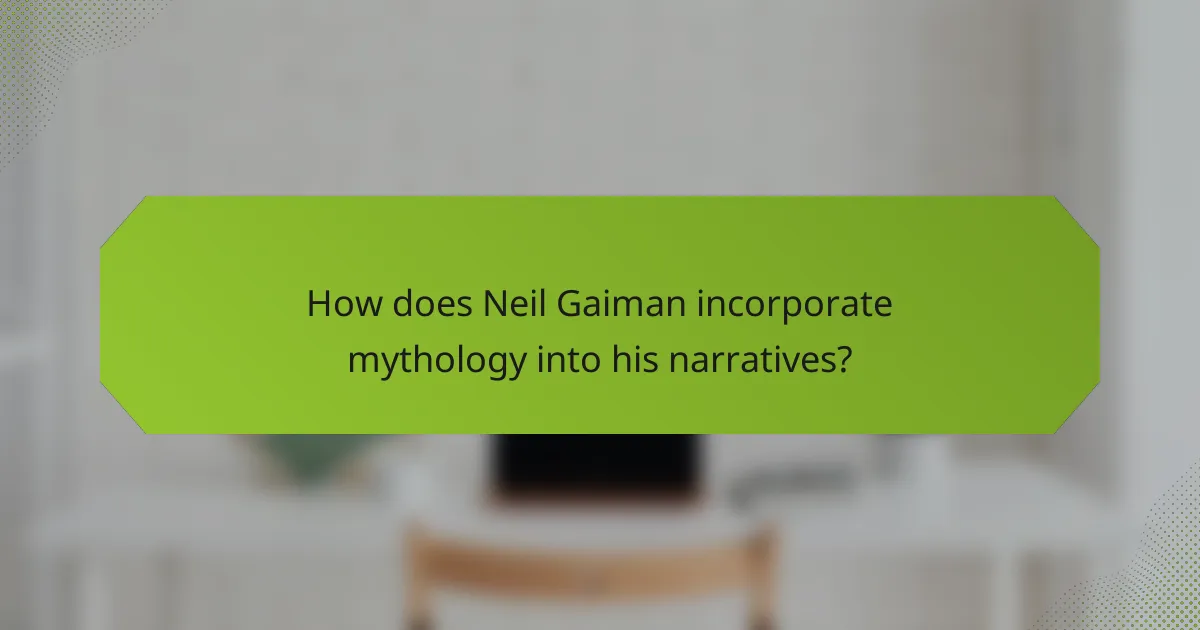
How does Neil Gaiman incorporate mythology into his narratives?
Neil Gaiman skillfully weaves mythology into his narratives, enriching his storytelling with ancient tales and archetypes. He often draws from various mythologies, including Norse, Hindu, and Celtic, creating a tapestry of interconnected stories. Gaiman’s unique attribute is his ability to blend these mythological elements with modern themes, making them accessible to contemporary audiences. For example, in “American Gods,” he explores the clash between old gods and new beliefs, illustrating the evolution of mythology in a changing world. This integration not only enhances character depth but also invites readers to reflect on the relevance of myths in their lives.
What are the key mythological influences in Gaiman’s works?
Neil Gaiman’s works are profoundly influenced by various mythological traditions, weaving them into rich narratives. His storytelling often draws from Norse, Celtic, and Egyptian mythologies, creating a tapestry of fantasy that enriches character development and plot. Gaiman’s unique attribute lies in his ability to reinterpret these myths, making them accessible and relevant to contemporary audiences. For instance, “American Gods” showcases a blend of ancient deities with modern American culture, illustrating how mythology adapts and persists. Rarely, Gaiman also incorporates lesser-known myths, enhancing the depth and diversity of his narratives.
Which mythological elements are most prevalent in his storytelling?
Neil Gaiman frequently incorporates mythological elements like gods, folklore, and archetypes into his storytelling. His works often draw from various cultural mythologies, blending them seamlessly with fantasy. For instance, in “American Gods,” Gaiman explores the clash between old gods and new, emphasizing their relevance in contemporary society. He also uses unique characters and settings that reflect rare mythological traits, such as the personification of abstract concepts. This integration enriches his narratives and deepens the reader’s engagement with both the familiar and the fantastical.
How does Gaiman reinterpret traditional myths?
Neil Gaiman reinterprets traditional myths by blending them with contemporary themes and unique narrative styles. His works often feature modern characters navigating ancient stories, creating a dialogue between past and present. For example, in “American Gods,” Gaiman explores the clash of old deities and new societal values, illustrating how myths adapt to modern life. This unique attribute of merging myth with current issues allows readers to see timeless themes through a fresh lens, making ancient tales relevant today. Gaiman’s literary style, characterized by rich imagery and intricate plots, enhances the depth of these reinterpretations, inviting readers to engage with mythology in innovative ways.
Why is mythology significant in Gaiman’s literary style?
Mythology is significant in Gaiman’s literary style because it enriches his narratives and deepens character development. Gaiman seamlessly integrates mythological elements, creating a unique blend of fantasy and reality. This fusion allows readers to explore universal themes like identity and morality through familiar archetypes. By drawing on diverse mythologies, he crafts stories that resonate across cultures, enhancing their emotional and intellectual impact. Gaiman’s use of mythology also serves as a root attribute, distinguishing his work in contemporary literature.
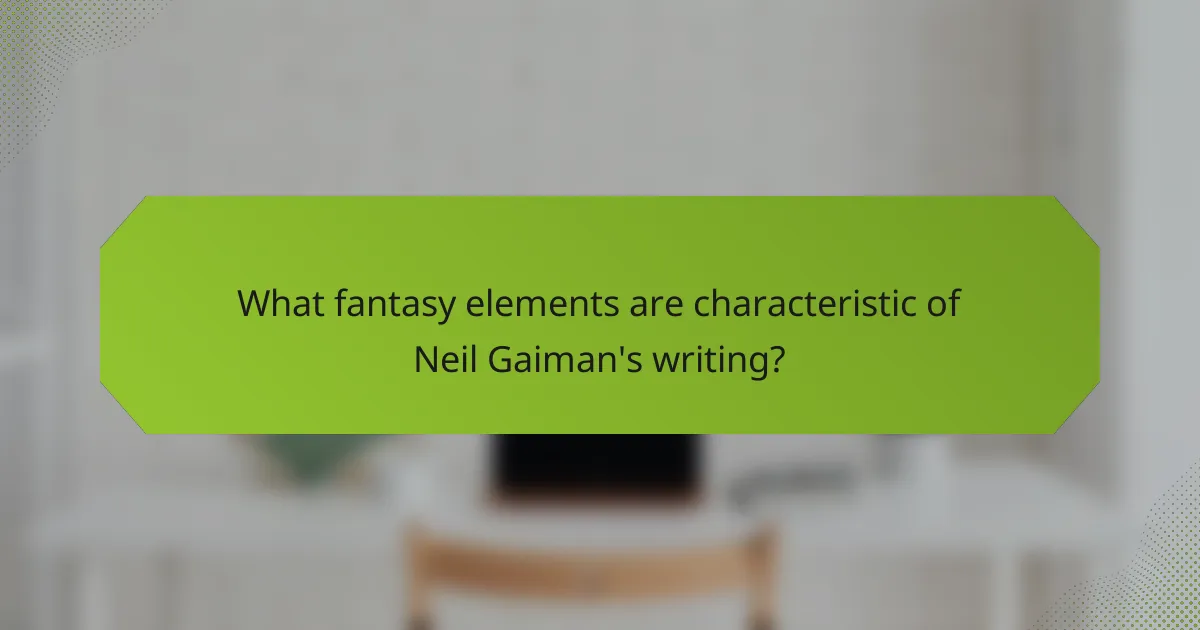
What fantasy elements are characteristic of Neil Gaiman’s writing?
Neil Gaiman’s writing is characterized by a rich blend of mythology, surrealism, and dark fantasy. His narratives often intertwine folklore with contemporary settings, creating a unique atmosphere. Gaiman frequently employs archetypal characters, such as gods and mythical creatures, enhancing the sense of wonder. The use of dreamlike sequences adds depth, inviting readers into a world where reality and fantasy coexist. Additionally, his exploration of themes like identity and the human experience resonates through fantastical elements, making his stories both relatable and enchanting.
How does Gaiman blend fantasy with reality in his stories?
Neil Gaiman masterfully blends fantasy with reality by intertwining mythological elements and rich literary style. His narratives often feature ordinary characters encountering extraordinary circumstances, creating a seamless integration of the fantastical within everyday life. Gaiman’s use of detailed settings and relatable emotions grounds his stories, making the surreal feel tangible. For instance, in “American Gods,” he juxtaposes the mundane with divine beings, illustrating how mythology influences contemporary existence. This unique approach invites readers to explore deeper truths about human experience through the lens of fantasy.
Which fantasy tropes does Gaiman frequently utilize?
Neil Gaiman frequently utilizes tropes such as mythological reimagining, unreliable narrators, and the blending of reality with fantasy. His works often feature archetypal characters, such as tricksters and heroes, and explore themes of identity and transformation. Gaiman’s narrative style includes intertextual references, creating a rich tapestry that connects various mythologies and folklore. Additionally, he employs dark humor and surrealism to challenge traditional storytelling conventions.
What role does world-building play in Gaiman’s fantasy narratives?
World-building is essential in Neil Gaiman’s fantasy narratives as it creates immersive, intricate settings. His unique blend of mythology and fantasy elements fosters a rich tapestry that enhances character development and plot depth. Gaiman’s world-building often incorporates rare attributes from various cultural mythologies, inviting readers into a familiar yet fantastical realm. This approach not only captivates the audience but also encourages exploration of universal themes through a unique lens.

In what ways does Neil Gaiman’s literary style set him apart?
Neil Gaiman’s literary style is distinguished by its seamless integration of mythology and fantasy elements. His narratives often intertwine folklore with contemporary themes, creating a rich tapestry that captivates readers. Gaiman’s unique voice blends poetic language with accessible storytelling, allowing complex ideas to resonate with a broad audience. His use of unreliable narrators and metafictional techniques adds layers of depth, inviting readers to question reality. This innovative approach sets him apart in the literary landscape, showcasing his ability to create immersive worlds while exploring profound human experiences.
What are the defining features of Gaiman’s prose?
Neil Gaiman’s prose is characterized by a seamless blend of mythology, fantasy elements, and a distinctive literary style. His narratives often incorporate rich, imaginative worlds that draw from folklore and myth, creating a sense of wonder. Gaiman’s unique voice combines whimsical and dark themes, engaging readers with relatable characters facing extraordinary circumstances. He frequently employs vivid imagery and lyrical language, enhancing the emotional impact of his stories. Gaiman’s ability to intertwine the mundane with the fantastical sets his work apart, making it both accessible and profound.
How does Gaiman’s narrative voice contribute to his storytelling?
Gaiman’s narrative voice enhances storytelling through its lyrical quality and conversational tone. This unique attribute allows readers to connect emotionally with characters and themes. His blending of mythology and fantasy creates a rich tapestry of storytelling that feels both familiar and innovative. As a result, his works resonate across diverse audiences, making them timeless and impactful.
Which stylistic techniques does Gaiman employ to engage readers?
Neil Gaiman employs various stylistic techniques to engage readers, including rich imagery, nonlinear narratives, and a blend of humor and darkness. His use of mythology enhances depth, while relatable characters draw readers into fantastical worlds. Gaiman’s lyrical prose creates an immersive reading experience, allowing readers to connect emotionally with the story.
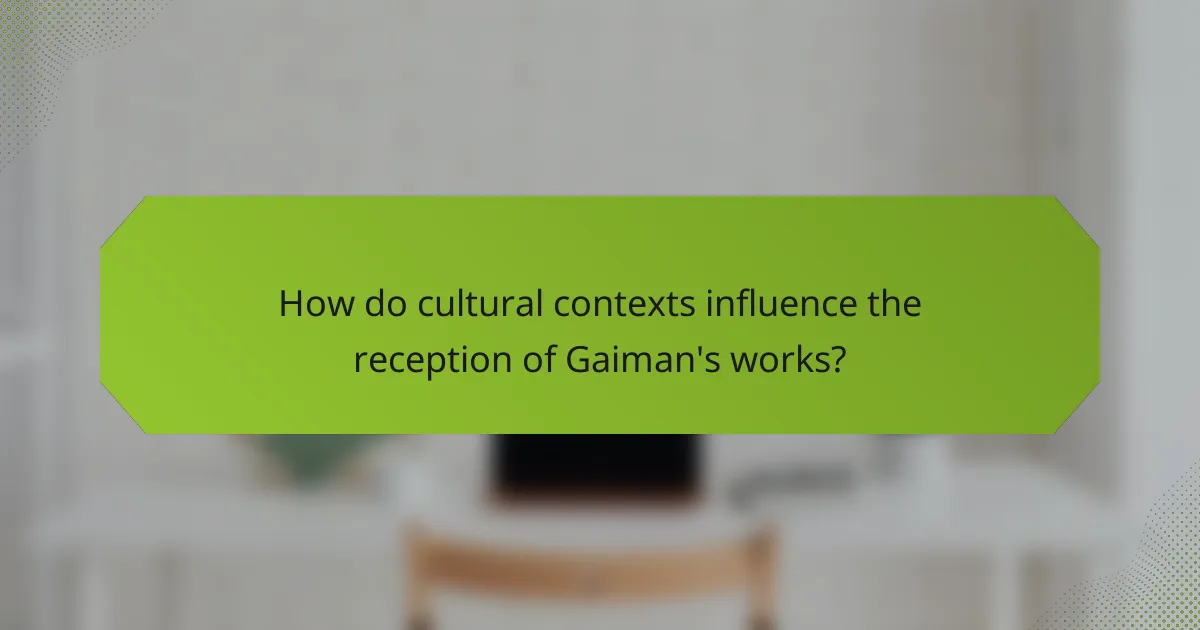
How do cultural contexts influence the reception of Gaiman’s works?
Cultural contexts significantly shape the reception of Neil Gaiman’s works by influencing reader interpretations and emotional connections. Gaiman’s blending of mythology and fantasy resonates differently across cultures, where local myths and storytelling traditions impact how audiences engage with his narratives. For instance, in cultures with rich oral traditions, Gaiman’s storytelling style may be appreciated for its rhythmic and narrative qualities. Additionally, themes of identity and belonging in his works align with various cultural experiences, enhancing relatability. As a result, Gaiman’s ability to weave universal themes with culturally specific elements fosters diverse interpretations and deeper connections with his audience.
What regional interpretations of Gaiman’s themes exist?
Regional interpretations of Neil Gaiman’s themes often reflect local myths and cultural nuances. For instance, his works resonate differently in the UK, where folklore influences are prominent, compared to the American context, which emphasizes individualism and modernity. Gaiman’s blending of mythology and fantasy elements allows for diverse readings, showcasing unique attributes like the integration of local legends, which vary by region. In countries like Japan, his narratives may intertwine with Shinto beliefs, while in Latin America, they might reflect indigenous traditions. Such adaptations highlight the rare attribute of Gaiman’s versatility in engaging with global literary styles.
How do different audiences respond to Gaiman’s blending of genres?
Different audiences respond to Gaiman’s genre blending with varied appreciation. Readers of fantasy often embrace the mythical elements, while literary audiences may focus on his narrative style. Young adults connect with relatable themes, and scholars analyze the intertextuality present in his works. Gaiman’s unique ability to merge these genres creates a rich tapestry that appeals to diverse literary tastes. This multifaceted approach enhances his reach across different demographics, fostering discussions on mythology and modern storytelling.

What are some unique attributes of Neil Gaiman’s works?
Neil Gaiman’s works feature unique attributes that blend mythology, fantasy, and literary style. His narratives often incorporate folklore, creating rich, immersive worlds. Gaiman’s characters frequently traverse between reality and fantasy, reflecting deep psychological themes. His distinctive voice combines humor with dark undertones, engaging readers on multiple levels. The use of metafiction is another rare attribute, inviting readers to question storytelling itself.
How does Gaiman’s personal background shape his writing?
Neil Gaiman’s personal background significantly influences his writing style and themes. His childhood in England exposed him to folklore and mythology, which permeate his narratives. Gaiman’s diverse experiences, from journalism to graphic novels, enrich his storytelling techniques. His fascination with the fantastical and the mundane allows him to blend elements seamlessly, creating a unique literary voice that resonates with readers.
Which lesser-known works showcase Gaiman’s range as an author?
Neil Gaiman’s lesser-known works include “The Ocean at the End of the Lane,” “The Graveyard Book,” and “Coraline.” Each showcases his unique blend of mythology and fantasy elements. “The Ocean at the End of the Lane” explores memory and childhood through a surreal narrative. “The Graveyard Book” reimagines the coming-of-age story in a graveyard setting, merging whimsy with darker themes. “Coraline” presents a haunting tale of parallel worlds, highlighting Gaiman’s skill in crafting eerie atmospheres. These works reflect his literary range and ability to engage with complex themes.
What unique collaborations has Gaiman engaged in throughout his career?
Neil Gaiman has engaged in unique collaborations with various artists and creators throughout his career. Notable partnerships include his work with artist Dave McKean on graphic novels like “The Sandman” series, blending visual art with narrative. Gaiman also collaborated with filmmaker Jim Henson’s Creature Shop for “The Jim Henson Company” to create “The Sandman: A Midsummer Night’s Dream.” Additionally, he partnered with musicians such as Amanda Palmer, co-creating projects that merge storytelling with music. These collaborations showcase Gaiman’s versatility in integrating different artistic mediums.
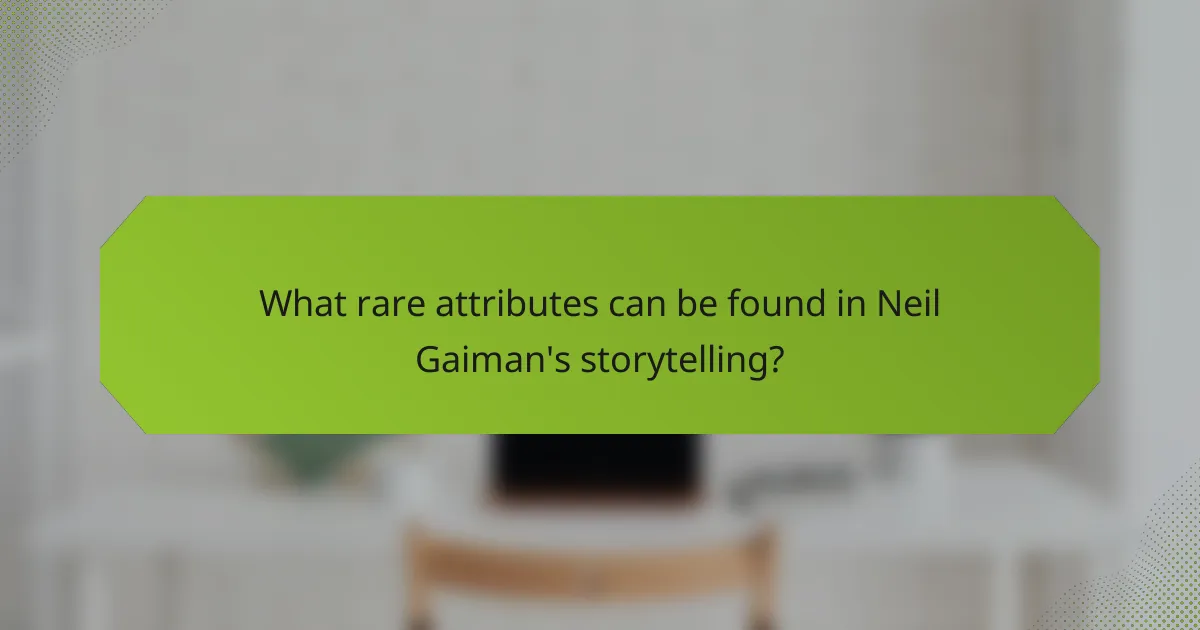
What rare attributes can be found in Neil Gaiman’s storytelling?
Neil Gaiman’s storytelling features rare attributes such as unconventional narrative structures, blending of genres, and unique character perspectives. His ability to interweave folklore with modern themes creates a distinct reading experience. Gaiman often employs metafiction, challenging the boundaries of storytelling and engaging readers in innovative ways. Additionally, his use of lyrical prose enhances the emotional depth of his narratives, setting him apart in contemporary literature.
How does Gaiman address contemporary issues through fantasy?
Neil Gaiman addresses contemporary issues through fantasy by using mythological elements to reflect societal concerns. His narratives often explore themes such as identity, migration, and cultural conflict. For instance, in “American Gods,” Gaiman critiques the impact of consumerism on traditional beliefs. This unique blending of fantasy and reality allows readers to engage with complex issues in an accessible manner. Additionally, Gaiman’s characters often navigate moral dilemmas, highlighting the human experience in a rapidly changing world.
What unconventional narrative structures does Gaiman explore?
Neil Gaiman explores unconventional narrative structures by employing non-linear timelines, multiple perspectives, and metafictional elements. His stories often blend reality with myth, creating immersive worlds that challenge traditional storytelling. For example, in “The Sandman,” he intertwines various myths and legends, allowing characters to traverse different realities. This approach deepens the reader’s engagement and invites them to question the nature of storytelling itself. Gaiman’s unique attribute lies in his ability to seamlessly merge fantasy with profound literary themes, making his narratives both imaginative and thought-provoking.
Which themes appear infrequently in his body of work?
Neil Gaiman’s body of work infrequently explores themes of strict realism and contemporary politics. Instead, he predominantly focuses on mythology, fantasy, and the fantastical interplay of literary styles. His unique narrative style often blends traditional folklore with modern storytelling, leaving little room for purely realistic portrayals. Rarely does he delve into themes that lack a fantastical or mythical element, making his exploration of reality a distinct outlier in his oeuvre.

What practical tips can readers apply when exploring Neil Gaiman’s literature?
Readers can enhance their experience with Neil Gaiman’s literature by embracing his unique blend of mythology and fantasy. Start by exploring the rich intertextuality in his works, which often references various myths and folklore. Engage with the narrative style, paying attention to the rhythm and language that Gaiman employs to create immersive worlds. Consider reading his stories aloud to appreciate the lyrical quality. Additionally, explore the themes of identity and transformation that frequently appear in his writing. Joining book clubs or online discussions can further deepen understanding and appreciation of his complex characters and plots.
How can readers enhance their understanding of Gaiman’s themes?
Readers can enhance their understanding of Gaiman’s themes by exploring his use of mythology, character development, and narrative structure. Analyzing how Gaiman weaves traditional myths into contemporary settings reveals deeper meanings. Engaging with his diverse literary style helps appreciate the emotional and philosophical layers in his work. Additionally, discussing his themes with others can provide new perspectives and insights.
What common mistakes should be avoided when interpreting Gaiman’s works?
Avoiding common mistakes when interpreting Neil Gaiman’s works involves recognizing his unique narrative style and thematic depth. Readers should not overlook the significance of mythology in his stories, as it often serves as a foundation for character development and plot progression. Misunderstanding the blending of fantasy elements with real-world issues can lead to misinterpretation of the themes. Additionally, it’s crucial to appreciate the subtlety of his prose; over-analyzing or taking lines out of context can distort the intended meaning. Lastly, readers should be cautious of expecting traditional resolutions, as Gaiman often embraces ambiguity and open-ended conclusions.
Which strategies can help readers appreciate the depth of Gaiman’s storytelling?
To appreciate the depth of Neil Gaiman’s storytelling, readers should explore his use of mythology, intricate character development, and layered narratives. Engaging with the folklore and cultural references enriches understanding. Analyzing his stylistic choices reveals how he weaves fantasy elements into relatable human experiences. Readers can benefit from discussing themes and interpretations in book clubs or online forums, fostering a deeper connection to the text.
